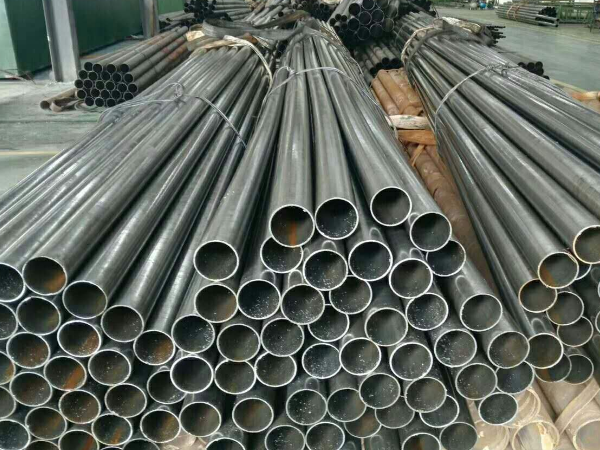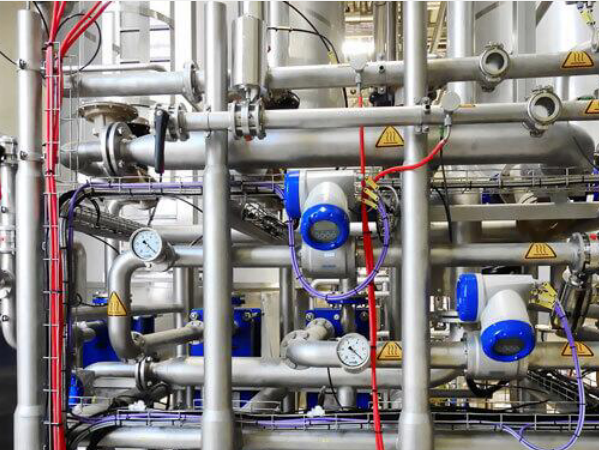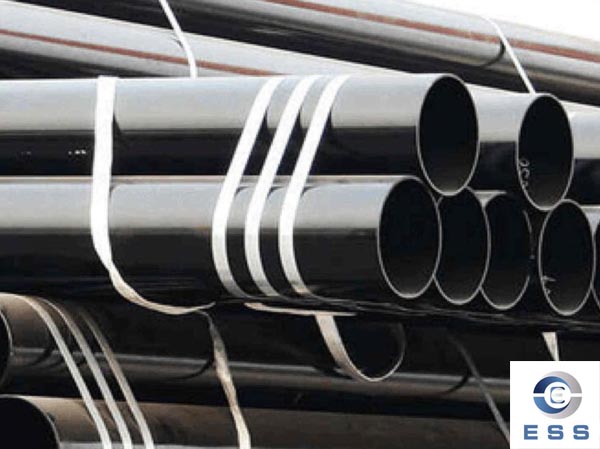Seamless carbon steel pipe quality inspection can be divided into the following aspects: chemical composition analysis; steel tube geometric size and shape inspection; surface quality inspection; seamless steel pipe management performance inspection;process performance inspection; Metallographic analysis of seamless steel tube and so on.
1. Chemical composition analysis: chemical analysis method, instrumental analysis method (infrared C—S instrument, direct reading spectrometer, zcP, etc.).
①Infrared C-S instrument: Analyze the C and S elements in ferroalloys, steel-making raw materials, and steel.
②Direct reading spectrometer: C, Si, Mn, P, S, Cr, Mo, Ni, Cn, Al, W, V, Ti, B, Nb, As, Sn, Sb, Pb, Bi in the bulk sample
③N-0 instrument: gas content analysis N, O
2. Steel tube geometry and shape inspection:
① Inspection of seamless tube wall thickness: micrometer, ultrasonic thickness gauge, no less than 8 points at both ends and record.
②Examination of the outer diameter and ovality of seamless tubes: calipers, vernier calipers, ring gauges.
③Length inspection of seamless tubes: steel tape measure, manual and automatic length measurement.
④ Inspection of seamless tube and steel tube curvature: straightedge, level (1m), feeler gauge, thin wire to measure the curvature per meter and the curvature of the full length.
⑤ Inspection of the bevel angle and blunt edge of the end face of the seamless tube: square, chuck.
3. Surface quality inspection of seamless steel tube:
①Artificial visual inspection: lighting conditions, standards, experience, signs, steel tube rotation.
②Non-destructive inspection:
a. Ultrasonic flaw detection UT:
It is more sensitive to the surface and internal crack defects of various materials with uniform materials.
b. Eddy current flaw detection ET: (electromagnetic induction)
Mainly sensitive to point (hole-shaped) defects.
c. Magnetic particle MT and magnetic flux leakage detection:
Magnetic flaw detection is suitable for the detection of surface and near surface defects of ferromagnetic materials.
d. Electromagnetic ultrasonic flaw detection:
No coupling medium is required, and it can be used for high-temperature, high-speed, rough surface flaw detection of seamless steel tubes.
e. Penetration inspection:
Fluorescence, coloring, and detection of surface defects of steel tubes.
4. Seamless steel management performance inspection:
① Tensile test: measure stress and deformation, determine the strength (YS, TS) and plasticity index (A, Z) of the material
Longitudinal and transverse samples tube section, arc, round sample (¢10, ¢12.5)
Small-diameter thin-walled steel tube, large-diameter thick-walled steel tube, calibration distance.
②Impact test: CVN, notched C type, V type, work J value J/cm2
Standard sample 10×10×55 (mm) Non-standard sample 5×10×55 (mm)
③Hardness test: Brinell hardness HB, Rockwell hardness HRC, Vickers hardness HV, etc.
④Hydraulic test: test pressure, voltage stabilization time, p=2Sδ/D
5. Process performance inspection process of seamless steel tube:
① Flattening test: round sample C-shaped sample (S/D>0.15) H=(1+2)S/(∝+S/D)
L=40~100mm Deformation coefficient per unit length=0.07~0.08
② Ring pull test: L=15mm, no cracks are qualified
③Flaring and crimping test: the top center taper is 30°, 40°, 60°
④Bending test: can replace flattening test (for large diameter tube)
6. Metallographic analysis of seamless steel tube:
① High power inspection (microscopic analysis): Non-metallic inclusions 100x GB/T 10561 Grain size: grade, difference
Organization: M, B, S, T, P, F, A-S
Decarburization layer: inside and outside.
A method rating: Class A-Sulfide Class B-Oxide Class C-Silicate D-Spherical Oxidation DS Class.
② Low magnification test (macro analysis): the naked eye, magnifying glass is less than 10x.
a. Acid etching inspection method.
b. Sulfur seal inspection method (tube embryo inspection, showing low-cultured tissue and defects, such as looseness, segregation, subcutaneous bubbles, peeling, white spots, inclusions, etc.
c. Tower-shaped hairline inspection method: inspect the number, length and distribution of hairline.









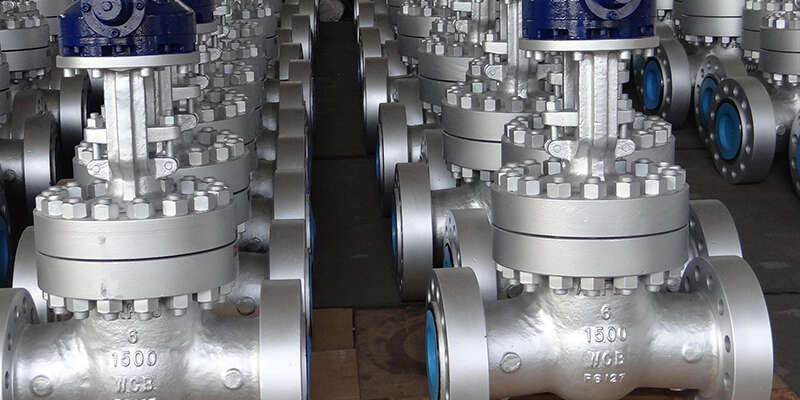
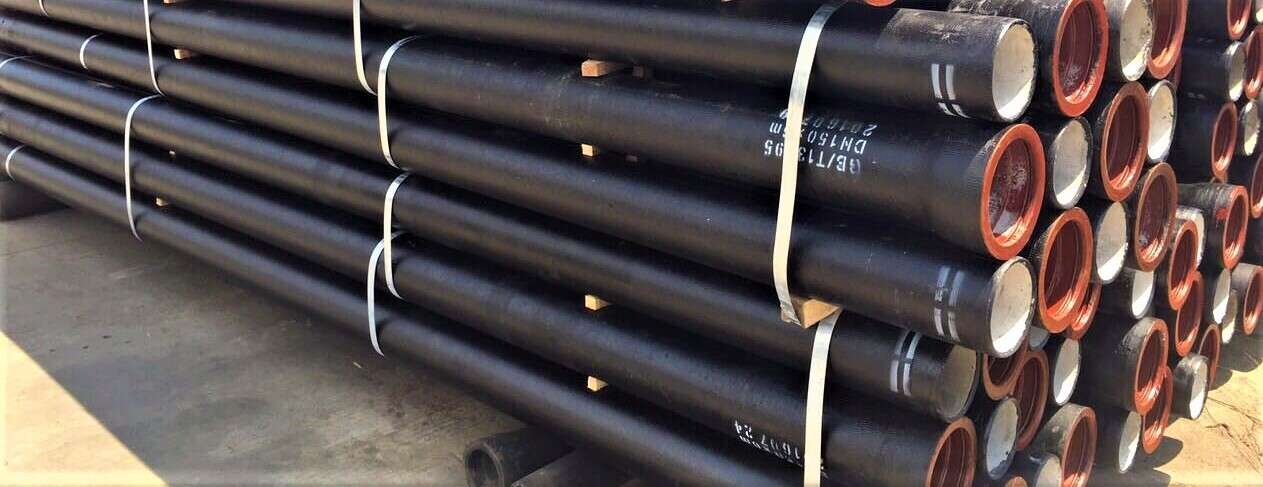


 Eastern Steel Manufacturing Co., Ltd no solo mejora la producción de productos y los servicios de venta, sino que también brinda servicios adicionales de valor agregado. Siempre que lo necesite, podemos completar sus necesidades específicas juntos.
Eastern Steel Manufacturing Co., Ltd no solo mejora la producción de productos y los servicios de venta, sino que también brinda servicios adicionales de valor agregado. Siempre que lo necesite, podemos completar sus necesidades específicas juntos.






